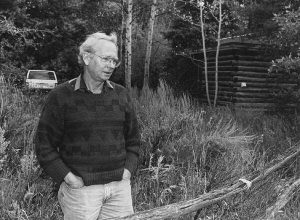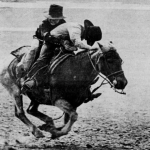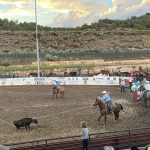Berger Cabin in Aspen added to National Register of Historic Places
The Aspen Times

The Aspen Times archives
The Berger Cabin in Aspen has been officially added to the National Register of Historic Places, a recognition that underscores both its architectural distinction and cultural resonance.
Perched at the western terminus of Main Street, the structure has seen minimal alteration across nearly eight decades, preserved in part due to having only two owners over its lifetime.
Designed by Fritz Benedict in 1947, the cabin was the first architectural commission of his prolific career and remains one of only two surviving residential examples of his work locally.
Benedict’s story, interwoven with Aspen’s own post-war evolution, began with his service in the U.S. Army’s 10th Mountain Division during World War II. After winning the 1941 Arizona ski championship, the Wisconsin-born landscape architect trained at Camp Hale and visited Aspen, promising to return if he survived the war. He kept that promise in 1945, purchasing a pig farm and embarking on an architectural career that would come to define much of Aspen’s built environment.
Beyond residential work, he collaborated with Bauhaus designer Herbert Bayer on the Aspen Institute campus and helped design the original Sundeck atop Aspen Mountain. He played a central role in the creation of Aspen’s pedestrian mall and the drafting of Pitkin County’s sign code.

Support Local Journalism
His architectural vision also influenced ski resort master plans at Breckenridge, Snowmass, and Vail, and he founded the 10th Mountain Hut and Trail System, a 300-mile backcountry network between Aspen and Vail.
The home derives its name from its late homeowner Bruce Berger, an award-winning poet, nonfiction writer, and founding member of the Aspen Literary Foundation — now Aspen Words — who owned the house for 53 years, although it is also referred to as the Benedict Cabin.
Eric Newcombe, state and regional coordinator for the National Register in Colorado, described the structure as “worthy of preservation” for its exemplary architectural lineage.
“The cabin is architecturally significant because it was one of Benedict’s earliest works in Aspen,” Newcombe said. “It is an excellent representation of modern architecture and Usonian architecture in particular.”
Benedict, who trained under Frank Lloyd Wright from 1938 to 1941, integrated the tenets of organic architecture with native materials appropriate for alpine conditions. Constructed from rounded logs with butt-and-pass notching, cementitious chinking, and sandstone detailing, the Berger Cabin reflects an early and authentic embodiment of Aspen’s post-war revival.
The National Register requires that a property be 50 years or older to qualify.
“I am sure there are other cabins in the area that would meet this requirement, but this cabin stands out due to its architectural history, and its long-time resident, Bruce Berger, who has an incredible history with Aspen’s cultural and musical history,” Newcombe said.
In celebration of its designation, History Colorado will host a plaque presentation ceremony at the Berger Cabin, located at 835 West Main St., at noon Monday, May 12.
“This iconic and beautifully preserved cabin is such a perfect example of place-based history,” said Dawn DiPrince, president and CEO of History Colorado. “The organic architecture of the Berger Cabin embodies a creative energy that is very specific to a high-altitude, post-World War II hopefulness that sparked arts movements, a ski industry, and a renewed communion with nature.”
Pitkin County historic preservation officer Suzannah Reid added, “Fritz Benedict was a powerful influence on Aspen’s built environment. The perceived simplicity of his work belies the thoughtfulness of his design philosophy.”
The designation was administered by History Colorado through its Office of Archaeology and Historic Preservation. Founded 146 years ago, the organization is a division of the Colorado Department of Higher Education and oversees one of the nation’s largest state-funded preservation programs, with more than 70% of its grants benefiting rural communities. History Colorado also operates 11 museums and historic sites across the state.
This story is from AspenTimes.com









